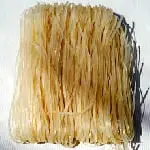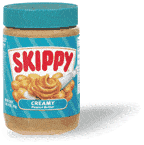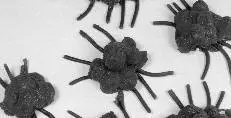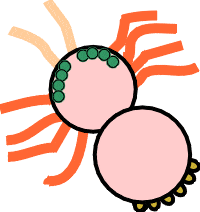Table of Contents
Chocolate Spiders
One of the activities for our Spider Theme was to make Chocolate Spiders. They’re delicious and really easy to make, whether with a class of kids or at home.
Ingredients:
Large block of Milk Cooking Chocolate
2 Tablespoons of Crunchy Peanut Butter
1 Packet of Chang Noodles
Some dessicated coconut
Method:
1. Melt the cooking chocolate slowly in a saucepan, stirring as it melts.
2. Mix the peanut butter (you can warm the peanut butter first) with chocolate.
3. Mix the melted chocolate and peanut butter, with coconut, pour over the noodle mixture.
Be careful not to break up the noodle sticks.
4. Put them in spoonful sized dollops on greaseproof paper and let them set.




Here’s another recipe for Chocolate Spiders
Ingredients:
12 oz. semi-sweet chocolate chips
5-1/4 oz. mini marshmallows (half a bag)
Waxed paper
Thin licorice whips ( black, brown or purple)
Method:
Melt chocolate in either microwave or double boiler until just melted. Stir until smooth. Add marshmallows. Place by spoonfuls on waxed paper. Decorate with 8 licorice “legs”. Let dry.
For variety add raisins or nuts or both, even M&M’s work well. Try different kinds of spider legs too. Potato Sticks or pretzel sticks. Think of even more. Be creative and have fun. Also spiders set much faster if put in the freezer for just a few minutes.
Makes about 16 spiders.

Spider Cookies
Another recipe to use in the classroom to teach kids about the spider’s parts, kindly sent in by Peg Powell from Concord in California.
To start, give each child a plastic sandwich bag filled with the following spider parts: ” a napkin, 2 chocolate sandwich cookies, 4 pieces of thin red licorice, 2 Chinese noodles, 8 round cake decoration candies, and 6 shelled sunflower seeds.
Then read these directions aloud:
1. Place the two cookies side by side on your napkin. A spider has 2 body parts. The front part is called the cephalothorax. The back is called the abdomen. The cephalothorax is like the head and chest of the spider. It contains its brain and stomach.
2. Carefully open the cephalothorax and lay each piece of licorice across the middle of the cookie. Put the top back on the cookie. A spider’s legs grow out from the front part of its body. Your spider should have 4 licorice legs on each side. How many legs do spiders have in all? Spider legs are covered with tiny hairs. It can smell and feel vibrations with these hair. Spiders also have two tiny claws on the end of each leg which help it cling to its web. If a leg is lost, a spider grows a new one!
3. Many spiders have 8 eyes. Lay your tiny candies on the cephalothorax in two rows with 4 in each row. Even with all those eyes, most spiders do not have good eyesight. How can a spider know when an insect is caught in her web? ( It feels the vibrations with its legs).
4. In the front of a spider’s body are its jaws and fangs. Stick 2 noodles into the filling of the cookie so they stick out under its eyes. Its jaws are very strong and its fangs sharp and poisonous. When a spider catches an insect, it use its fangs in two ways. First, it injects its prey with poison to paralyze it. Then, because spiders can only digest liquids, it injects the insect with digestive fluids that turn its insides into bug soup. The spider then sucks up the meal. It leaves the crunchy outside of the insect for another animal to enjoy.
5. Open your spider’s abdomen. This part contains the heart and lungs. In the back of the abdomen are 6 tiny spinnerets -tubes that release thin threads of silk to make a web or an egg sack. Place 6 sunflower seeds inside the back part of the spider’s body to remind you of the spinnerets.


